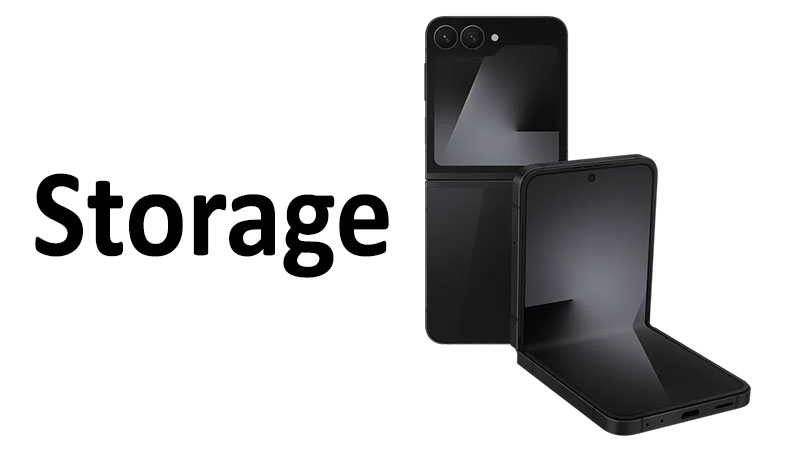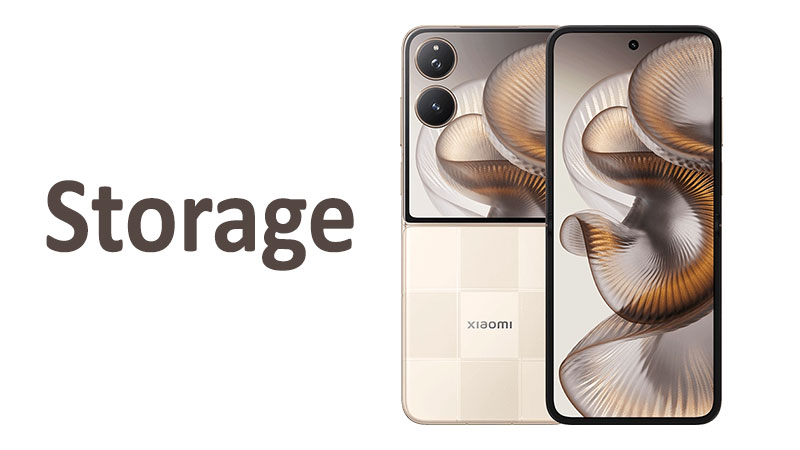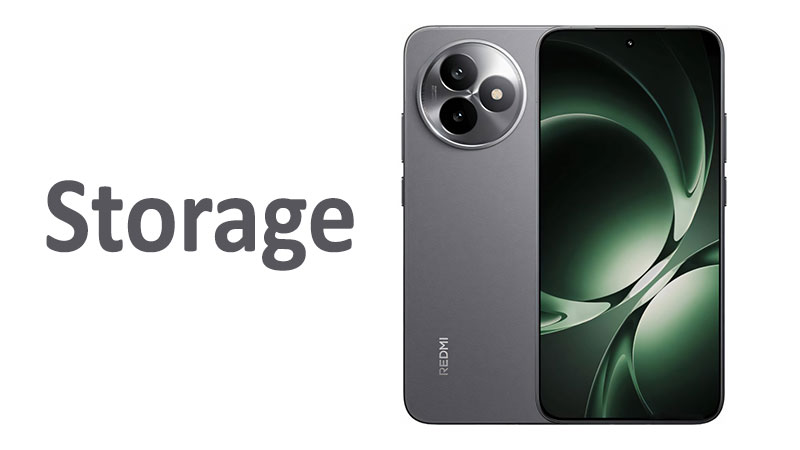The Samsung Galaxy Z Flip series has redefined the foldable smartphone market. It combines a compact, stylish design with powerful modern technology. One of the most critical factors for any smartphone buyer is storage. The Samsung Galaxy Z Flip 7 storage is a significant upgrade that addresses the growing needs of today’s users.
This article provides a complete and detailed breakdown of the Galaxy Z Flip 7’s storage. We will explore its capacity options, the type of storage technology used, and how it compares to previous models and competitors. Understanding these details is crucial for making an informed purchase decision. The right storage capacity ensures your phone can keep up with your digital life without constant worry about space.
Understanding Storage Capacity: The Heart of Your Digital Life
Storage capacity determines how much data your phone can hold. This includes your operating system, apps, photos, videos, music, and documents. With modern apps and high-resolution media, the need for ample storage has never been greater. The Galaxy Z Flip 7 meets this demand with a significant leap forward.
Available Capacities: The Samsung Galaxy Z Flip 7 is offered in two primary storage configurations:
- 256GB: This is the new base model. It is a substantial upgrade from previous generations.
- 512GB: This option caters to power users and content creators. It provides an expansive amount of space.
This move to a higher base storage is a crucial shift. It acknowledges that 128GB is no longer sufficient for many users. The 256GB base model ensures a smooth experience for the average user. They will not need to manage their files frequently.
Comparison with Previous Models:
- Samsung Galaxy Z Flip 6: The Z Flip 6 offered 128GB, 256GB, and 512GB options. The Z Flip 7 eliminates the 128GB variant entirely. This makes the 256GB model the new standard. It is a welcome change for new buyers.
- Samsung Galaxy Z Flip 5: This model also started at 256GB. However, the Z Flip 7’s higher RAM and faster storage type make it a more powerful device overall.
This shift in the base model shows Samsung’s commitment. They are listening to user feedback and adapting to market trends.
The Type of Storage: Why UFS 4.0 Matters
Capacity is only half the story. The type of storage technology is equally important. It affects how fast your phone can read and write data. This impacts everything from app loading times to file transfers and 4K video recording.
The Samsung Galaxy Z Flip 7 uses UFS 4.0 (Universal Flash Storage). This is a significant technological advancement. UFS 4.0 offers a massive performance boost over its predecessors.
What is UFS 4.0?
UFS 4.0 is the latest standard for smartphone flash storage. It is designed for high-speed data transfer. It is more efficient and faster than older standards like UFS 3.1. The improvements are substantial and noticeable in daily use.
Key Benefits of UFS 4.0:
- Blazing-Fast Speeds: UFS 4.0 boasts read speeds of up to 4,200 MB/s. It has write speeds of up to 2,800 MB/s. This is a considerable leap from UFS 3.1.
- Improved Efficiency: UFS 4.0 is more power-efficient. This contributes to better battery life. It reduces the strain on the processor during data-intensive tasks.
- Seamless Performance: Faster storage means apps launch almost instantly. Large files, like 4K videos, are saved without stuttering. Gaming performance is smoother, as game assets load quickly.
The Z Flip 7’s Performance Edge:
The combination of a powerful processor (the new Exynos 2500) and UFS 4.0 storage makes the Z Flip 7 incredibly responsive. It’s a huge step up from the Z Flip 6. The Z Flip 6 used UFS 3.1. The difference is most evident in demanding tasks. For example, high-resolution video editing or running multiple heavy apps at once.
Pros and Cons of the Samsung Galaxy Z Flip 7 Storage
Choosing a smartphone is about weighing the pros and cons. The storage options on the Z Flip 7 are no different.
Pros:
- Higher Base Storage: The 256GB starting point is excellent for most users. It provides peace of mind. You won’t have to worry about running out of space quickly.
- Future-Proof: The 512GB option is perfect for those who want to use their phone for many years. It accommodates future app updates and media storage.
- UFS 4.0 Technology: The use of UFS 4.0 is a major pro. It ensures top-tier performance. It makes the device feel incredibly fast and responsive.
- No MicroSD Card Slot: While this might seem like a con, it is a design choice. It allows Samsung to make the phone more compact and durable. It also ensures the fastest possible performance. Internal storage is always faster than an external card.
Cons:
- No MicroSD Card Slot: This is a major drawback for some users. Those who rely on expandable storage for large media libraries or easy file transfers may be disappointed. You are limited to the internal capacity you purchase.
- The Cost of Higher Capacity: The 512GB model comes with a higher price tag. This can be a significant cost consideration. You need to decide if the extra storage is worth the investment.
A Buyer’s Guide: Important Points to Consider
Before buying the Samsung Galaxy Z Flip 7, think about your storage needs. Here are some key points to help you decide.
- Your Usage Habits: How do you use your phone? Are you a casual user who mostly streams content? Or are you a power user who downloads large games, records 4K video, and stores a massive photo library?
- The 256GB Model: This is the ideal choice for most people. It’s more than enough for everyday use. It can handle a large number of apps, photos, and videos. It is the perfect balance of price and capacity.
- The 512GB Model: Consider this option if you are a professional user. It is great for content creators who film a lot of high-resolution video. It is also a good choice for gamers with many large, graphic-intensive titles. The extra space provides a buffer. You won’t have to constantly delete files.
- Cloud Storage: Remember to factor in cloud storage. Services like Google Photos, Dropbox, and Samsung Cloud are great alternatives. They can help you manage your files. You can free up internal storage by backing up photos and videos. This is a very effective strategy.
Competitive Analysis: Z Flip 7 vs. The Competition
The Z Flip 7’s storage configuration stands up well against its competitors. The move to a 256GB base model is a key advantage.
- Motorola Razr Ultra: The Motorola Razr Ultra often competes directly with the Z Flip series. It has a high-end storage option of 1TB, which the Z Flip 7 does not. However, the Z Flip 7’s UFS 4.0 storage technology may offer faster performance. The Z Flip 7 also provides a higher base capacity at a more competitive starting price.
- Google Pixel Fold: The Pixel Fold is in a different category. It often has fewer storage configurations. The Z Flip 7’s storage options are more streamlined and competitive within the flip-phone market.
- Slab Smartphones: Flagship slab smartphones like the Galaxy S series or iPhone Pros also offer large storage options. However, they are in a different form factor. The Z Flip 7 provides comparable storage options in a unique, compact design.
The Z Flip 7’s storage strategy is clear. It offers a generous base capacity with a high-end option for power users. This approach is highly competitive and consumer-friendly.
Conclusion
The Samsung Galaxy Z Flip 7 storage is a major highlight of the device. The upgrade to a 256GB base capacity is a thoughtful and necessary change. It makes the phone more appealing to a wider audience. The inclusion of UFS 4.0 storage technology is a significant performance boost. It ensures that the phone feels fast and responsive in all scenarios.
While the absence of a microSD card slot is a downside for some, the large internal options and the speed of UFS 4.0 mitigate this. For most users, the 256GB model will be more than enough. For those who need more, the 512GB variant is an excellent investment. The Galaxy Z Flip 7’s storage capabilities are a perfect example of how Samsung is refining its foldable phones. They offer both style and substance.
FAQ
Does the Samsung Galaxy Z Flip 7 have expandable storage?
No, the Samsung Galaxy Z Flip 7 does not have a microSD card slot. Its storage is not expandable.
How much storage does the base model of the Z Flip 7 have?
The base model of the Samsung Galaxy Z Flip 7 comes with 256GB of internal storage.
What type of storage technology is used in the Galaxy Z Flip 7?
The Galaxy Z Flip 7 uses UFS 4.0 (Universal Flash Storage) technology. This provides faster read and write speeds.
Is 256GB of storage enough for the average user?
Yes, for the average user, 256GB is a very generous amount of storage. It can hold thousands of photos, videos, and many apps.
How does the Z Flip 7’s storage compare to the Z Flip 6?
The Z Flip 7 eliminates the 128GB base model and starts at 256GB. It also upgrades to the faster UFS 4.0 storage, whereas the Z Flip 6 used UFS 3.1.



